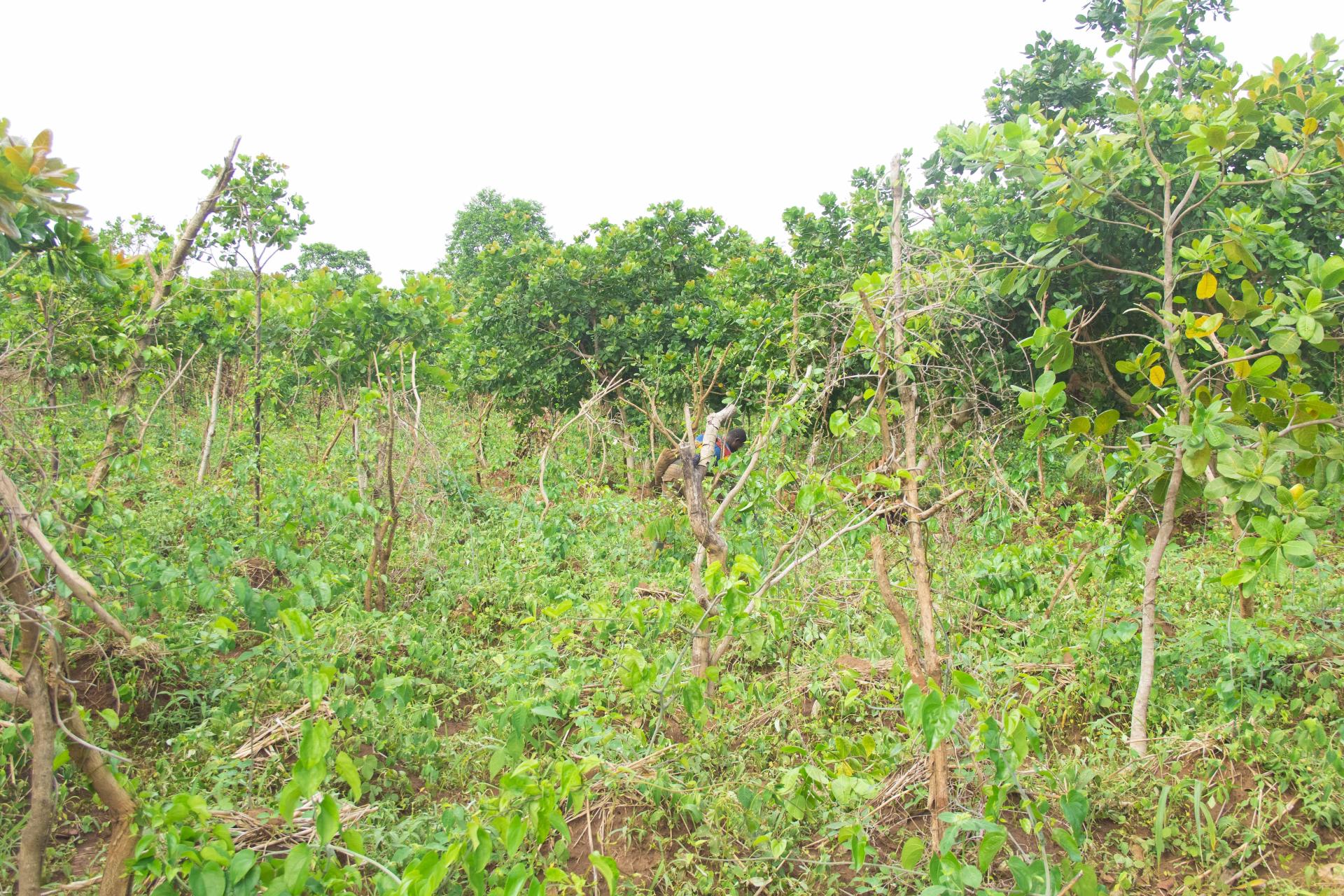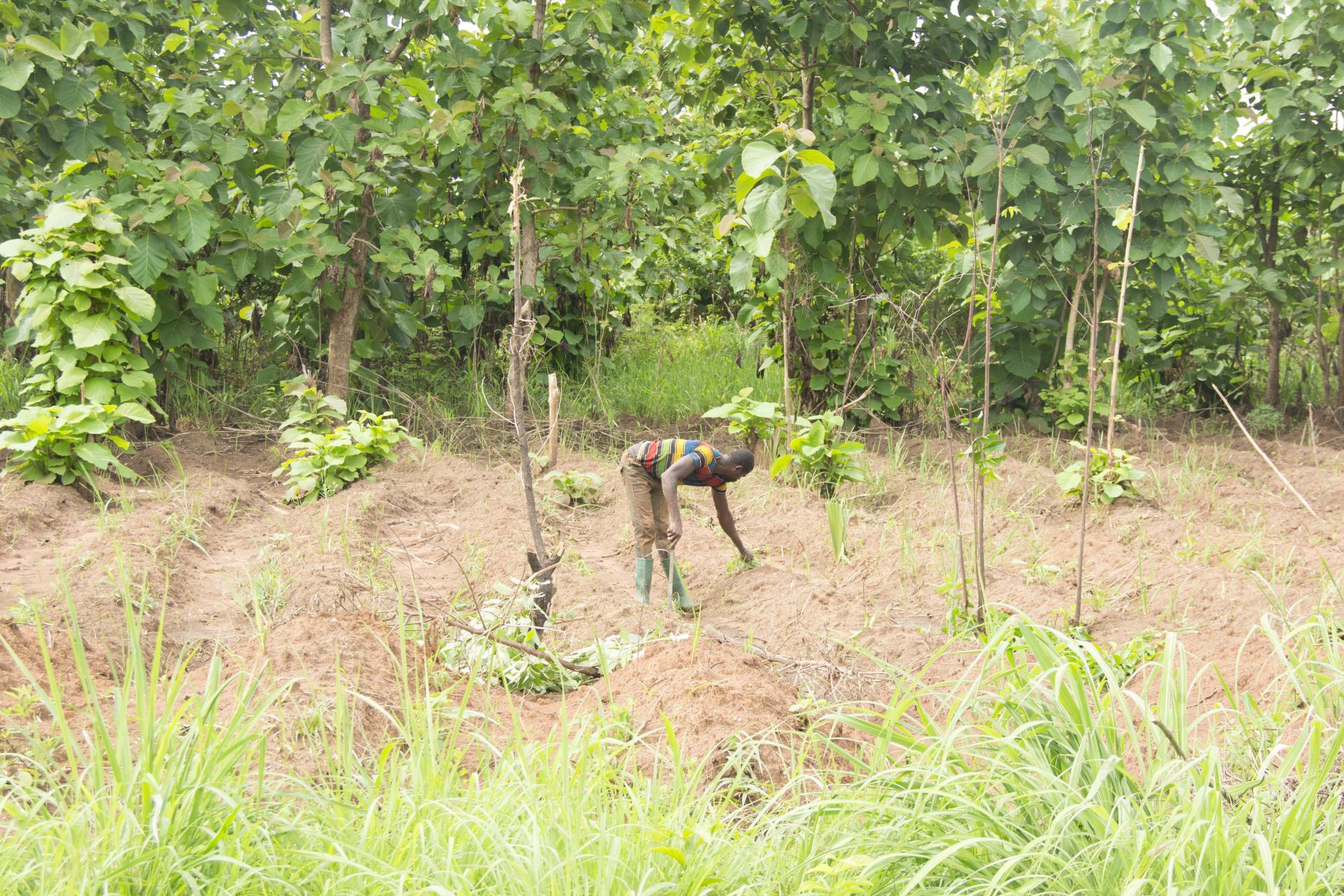

In Ghana, farmers increase yam yields with climate-smart technologies
Working together with Ghana's Crops Research Institute and the Department of Agriculture, AICCRA is supporting yam farmers in the Bono East Region of Ghana through the bundling of climate-smart agriculture (CSA) and 'One Health' technologies to improve yam production. One simple solution - ridging - has seen a fourfold increase in yam production on small plots.
Yam is a staple food in Ghana. It is used for fufu, ampesi, and of course fried yam, which is a famous street food. But the traditional ways of growing yam are associated with manual drudgery, inefficient use of land, low yields, and losses to pests and diseases which are rising due to climate change.
So, climate-smart technologies and innovations in agriculture are being designed to support yam farmers, who need farmlands to be more productive and farm work less laborious and costly.
AICCRA is working with national partners and smallholder farmers in Ghana to improve the productivity of yam farms, while reducing drudgery.
Evans' story
The challenge
"We underuse our farmland and waste energy building mounds for our yams, but the ridges are different," says 43-year-old Evans Tengah as he gestures to a 20-meter-long yam ridge he built a few days ago.
Ridges are alternative yam seedbeds that are more climate-smart than mounds - the ridges require less staking (and therefore contribute less to deforestation) and they retain higher amounts of rainwater in the furrows which contribute to higher tuber yields. This season, Evans has planted 14 ridges on his farm.
Evans migrated from Jirapa in the Upper West Region to Offuman in the Bono East Region in 2007 to seek a better life for himself and his family. Like most of the more than 2,000 migrant farmers in Offuman, he grows yam alongside crops like maize and cowpea.
For seven years, he has been growing yam on a three-acre plot of land he leased from a family. Many migrant farmers in the community do not own land, so maximizing the potential of his land to grow enough food to feed his family and sell to market is an utmost priority for Evans.
But the mounds he has been raising to grow his yams are huge, laborious, and occupy much space. As a result, he builds just about enough mounds that his strength and land size allow him.
Moreover, the seed yams he put in the mounds are almost full-size tubers, which he now acknowledges is an inefficient use of a precious resource.
A new way of growing yam
AICCRA has partnered with Ghana's Department of Agriculture and the Kumasi-based CSIR-Crops Research Institute in three districts in the Bono East Region to promote bundled climate-smart agriculture (CSA) and 'One Health' technologies for improved yam production through demonstration plots established in Offuman, Adomano, Tanoboase, Bawakura, Adiembra, and Agyegyemakunu.
Last year, 600 farmers attended farmer field days held on demonstration plots in the six communities.
The CSA-One Health technologies demonstrated include:
- Biological soil and seed treatment with neem leaf powder to treat soil and seed yam
- Ridging as an alternative to mounding
- Trellis or minimum staking to reduce deforestation
- Seed yam multiplication technologies such as yam mini-sett, which involves cutting yam tubers into smaller pieces of about 30 to 50g, aeroponics , and hydroponics.
These technologies are popular among yam farmers because they have proven to yield 30% more tubers than 'business-as-usual' farm practices.
Evans desires to give his children (aged 10 and one) a good life, so getting support to increase his farm yields excites him most about the technologies AICCRA has brought to Offuman.
For the current major planting season, Evans is trying ridging, yam mini-setts, minimum staking, and soil and seed yam treatment with neem leaf powder on less than a quarter of an acre of his land.
"With the ridges, I planted more seed yams on a smaller land than I normally would, and I am confident I will get a lot of yields. The ridges do not require a lot of energy to build. AICCRA taught us to produce the yam mini-setts I planted on the ridges. Each of the 14 ridges contains about 30 seed yams."
Evans Tengah

Evans works on his three acre farm where he grows yam on mounds
By planting 30 seed yams on each of the 14 ridges, Evans expects to harvest more than 400 tubers. In contrast, an acre of mounds fetches him nearly 100 tubers per season.
Planting yams on ridges adds the advantage of making farm management more manageable.
"With the ridges, weeding is easy," Evans says, slashing the air with his cutlass.
By introducing trellis as a minimum staking option, AICCRA has also revealed to farmers the adverse impact of conventional staking on the forest.
"We go far into the forest to cut tree stems and branches to stake our yams. We have learned that this practice is not good for the forest," Evans added.

Partnerships are advancing the scaling of CSA and CIS in Ghana
AICCRA's scaling successes in Ghana are made possible by institutional support and collaborations.
At the national level, the CSIR-Crops Research Institute has established demonstration plots in 21 communities and equipped extension agents with the necessary tools to support farmers in adopting validated CSA and One Health technologies to improve their productivity.
Meanwhile, the Ghana Meteorological Agency trains community radio stations and extension officers to disseminate daily and seasonal forecasts to farmers nationwide.
At the district level, the Department of Agriculture's crop and extension officers lead efforts to build community resilience by organising farmer field days on AICCRA's climate-smart demonstration plots.
"The success story from our collaboration with AICCRA is that almost every farmer in the district knows about CSA.”
Zacchaeus Kwarteng, crop officer at the Department of Agriculture in Techiman North District.
Zacchaeus added that “Yam mini-sett technology and ridging were first introduced in the district by AICCRA. Farmers have expressed their joy from the knowledge that they can produce more yams on the same small piece of land in contrast with the traditional way of growing yams".
Author
Reginald Ofori Kyere, Communications Specialist, AICCRA Ghana (International Institute of Tropical Agriculture - IITA)